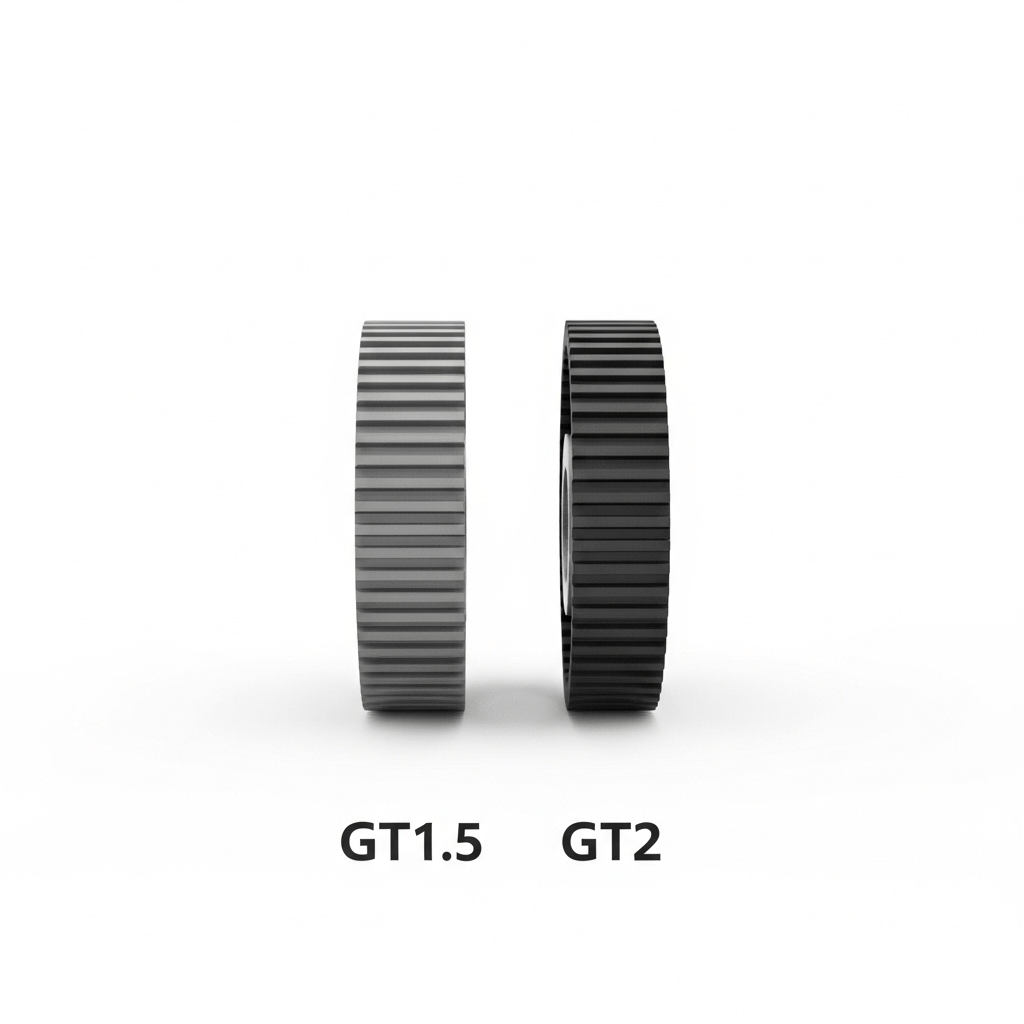When building your own 3D printer, the choice of motion components can have a direct impact on print quality. Among timing belts, GT2 is the most commonly used, but GT1.5 is gaining attention in smaller, precision-focused builds. It's first appeared commercially in consumer space when Qidi Plus 4.
GT2 belts feature a 2 mm tooth pitch and are widely used in both DIY and commercial 3D printers. Their rounded tooth design offers reliable grip and minimal backlash, making them ideal for most motion systems. GT2 belts are also easy to find, affordable, and well-supported across different pulley sizes, teeth counts.
GT1.5 belts, with a 1.5 mm pitch, offer slightly finer movement resolution. This can lead to reduced VFA (Vertical Fine Artefacts) and improved vertical details in prints. However, they are typically better suited to lightweight gantry systems or smaller printers, where mechanical stress is lower. GT1.5 belts are less common, and pulleys may be harder to source due to currently lower adoption by manufacturers, but they can be a worthwhile choice for users chasing better surface quality on new machines builds. At DREMC, we have GT1.5 Pulley avaaible, with compatible tooth idler coming soon, in meantime bearing stack or smooth idlers can be used.
GT1.5 belts are usually slightly more costly compare to the more common GT2 due to lower demand but once more printer manufacturers and user adoption the pricing would be similar with existing GT2 pricing.
Key Differences
-
GT2: Stronger, widely available, ideal for standard or replacing existing belts on existing 3D printers
-
GT1.5: Finer pitch for more detail, better suited for new build, its can help reduce VFAs
Final Thoughts
For most DIY 3D printers, GT2 belts remain the go-to option thanks to their balance of strength, availability and print reliability. However, if you're building a new printer and aiming to squeeze out every bit of surface quality, GT1.5 belts can offer a slight improvement in detail and reduce visual artefacts. You can pair those GT1.5 belts with our gates profiled pulley.
Your choice should come down to your specific build goals. If detail is king and your setup can handle it and its not slower large form factor printer, GT1.5 might just be the upgrade you're looking for.

